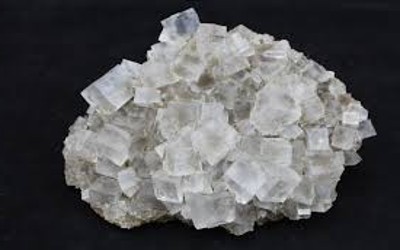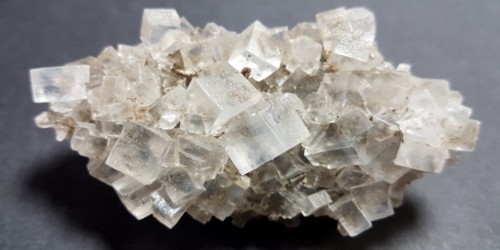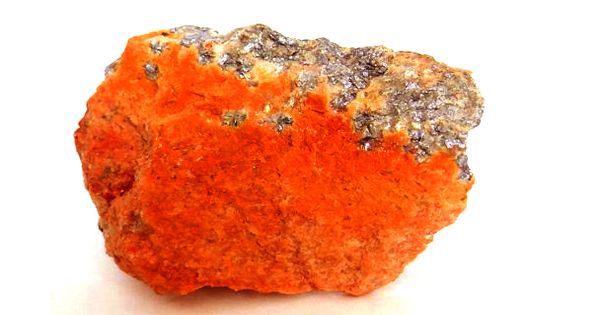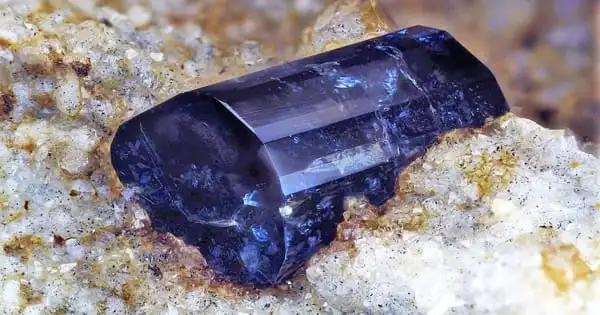Halite commonly known as rock salt, is a type of salt, the mineral (natural) form of sodium chloride (NaCl). It is a naturally occurring crystalline sodium chloride. Its chemical name is sodium chloride, and a rock composed primarily of halite is known as “rock salt.” It was named after the Greek word “halos”, meaning salt and “lithos”, meaning rock.
Halite forms isometric crystals. It commonly occurs with other evaporite deposit minerals such as several of the sulfates, halides, and borates.
General Information
- Category: Halide mineral
- Formula: NaCl
- Crystal system: Cubic
- Crystal class: Hexoctahedral (m3m)

Fig: Halite – rock salt
Properties
This mineral can be formed as well-formed coarse-sized euhedral or granular crystals. The mineral has a transparent appearance, vitreous luster, and the white streak. The mineral is typically colorless or white, but may also be light blue, dark blue, purple, pink, red, orange, yellow or gray depending on the amount and type of impurities. The relative hardness of halite is 2.5, and density is 2.17 g/cm3.
- Formula mass: 58.433 g/mol
- Color: Colorless or white
- Crystal habit: Predominantly cubes and in massive sedimentary beds, but also granular, fibrous and compact
- Fracture: Conchoidal
- Tenacity: Brittle
- Mohs scale hardness: 2.0 – 2.5
- Luster: Vitreous
- Streak: White
- Diaphaneity: Transparent
- Specific gravity: 2.17
- Optical properties: Isotropic
Occurrences
Halite occurs in vast beds of sedimentary evaporite minerals that result from the drying up of enclosed lakes, playas, and seas. Salt beds may be hundreds of meters thick and underlie broad areas. In the United States and Canada, extensive underground beds extend from the Appalachian basin of western New York through parts of Ontario and under much of the Michigan Basin.
Halite occurs in sedimentary rocks of evaporite association, cave deposits and as volcanic sublimates. The mineral is also common in multi-phase fluid inclusions. Dolomite, anhydrite, gypsum, carnallite, kieserite, polyhalite and sylvite are the minerals that are closely associated with halite.
Uses
Halite is often used both residentially and municipally for managing ice. It is common for homeowners in cold climates to spread salt on their sidewalks and driveways after a snow storm to melt the ice. It is not necessary to use so much salt that the ice is completely melted; rather, a small amount of salt will weaken the ice so that it can be easily removed by other means.
Information Source:
















